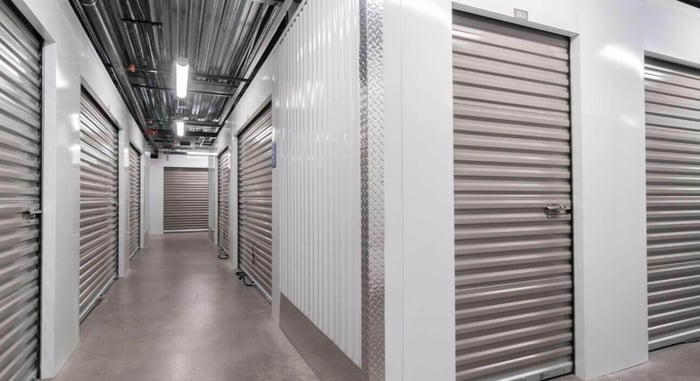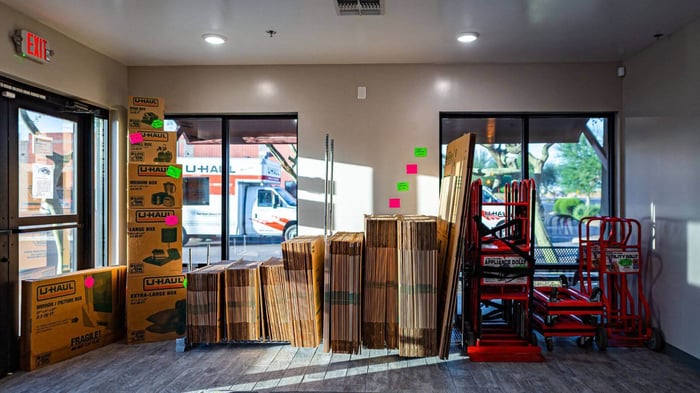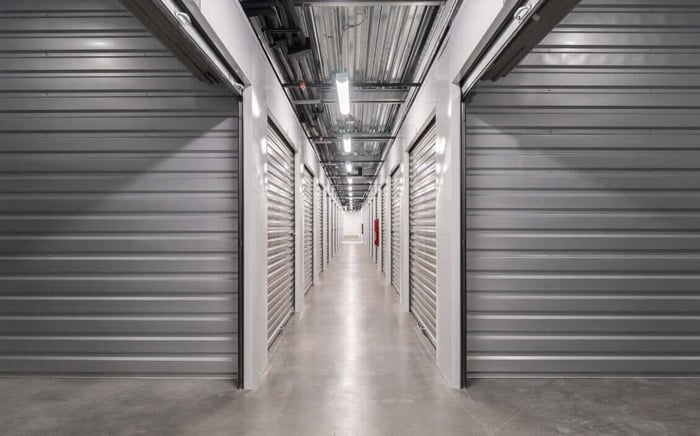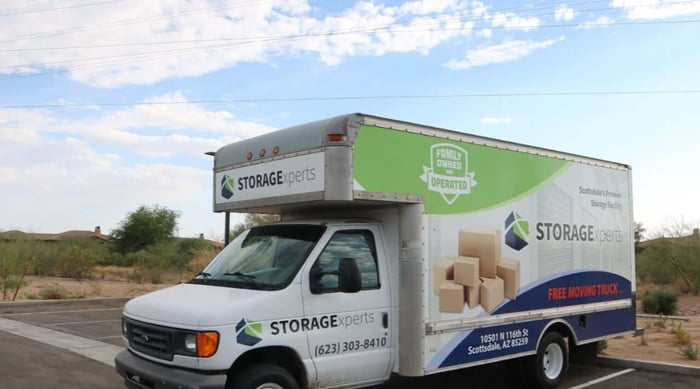Moving to a new house, city, or even state is more than just a physical transition—it's a moment of change, growth, and often a bit of chaos. With the right approach to packing, you can significantly reduce that stress. At STORAGExperts, we've helped thousands of people streamline their moves, and now we're bringing you the ultimate guide on how to pack boxes for moving.
This blog offers valuable information to help you tackle one of the most stressful aspects of moving: getting started. Whether you're dealing with tight spaces or multiple rooms full of stuff, following a straightforward packing menu can make a world of difference. Our step-by-step process ensures that you don't miss a thing. Even completing the minimum necessary work each day can keep you on track.
From gathering supplies and wrapping fragile items to efficiently loading the truck, every step in the process matters. With these expert tips, you'll know exactly how to protect your belongings, organize your stuff, and make the best use of your time, space, and materials. Even if you're only handling a few things yourself and hiring help for the rest, you'll find something valuable here. Whether you're managing one room or an entire house, this guide offers innovative ideas to help you unpack smoothly and settle into your new surroundings with ease. No matter the size of the move, you'll be equipped to work through it with confidence—and be ready for anything.
Gather Your Packing Supplies Before You Begin
Every successful move starts with preparation. Before you touch a single box, take a moment to plan out your steps and gather all the packing materials and supplies you'll need—this simple idea can save you time, stress, and last-minute scrambling.
Essential Packing Materials Include:
- Cardboard boxes in various sizes
- Strong packing tape
- Bubble wrap and packing paper
- Old newspaper, towels, or blankets for extra padding
- Markers for labeling
- Containers and specialty boxes for fragile or oddly shaped items
- Wardrobe boxes for clothes and shoes
- Tools like scissors, box cutters, and label stickers
Having these products within reach will make each step of the packing process more efficient and less frustrating.
Sort Items by Room and Category
Organization is the foundation of an easy move. The best way to track your contents and avoid losing things is to sort them by room and type.
Suggested Groupings:
- Clothes and accessories from your closet
- Kitchen goods such as dishes, plates, and silverware
- Bathroom essentials
- Books, pictures, and laptop
- Electronics and TV
- Furniture and large household items
- Garage tools and equipment
As you sort, set aside items you no longer use. Donating or selling unused items not only simplifies the move but can also save money by reducing the amount you need to pack and transport.
Use the Right Boxes for the Right Items
One of the most common mistakes during a move is using the wrong size or type of box for the items being packed.
- Small boxes are best for books, tools, or heavy items
- Medium boxes suit most general household contents
- Large boxes should be reserved for light, bulky stuff like pillows, linens, and towels
- Wardrobe boxes are perfect for hanging clothes, saving time on unpacking
- Specialty boxes are ideal for TVs, pictures, and appliances
Please ensure that each box is sturdy and capable of holding the weight of its contents. Weak or overfilled boxes often collapse, causing damage to belongings and injury to people during loading or unloading. These basic precautions align with self-storage tips to keep your belongings safe and secure, ensuring your items remain intact from packing to unpacking.
Protect Your Belongings with Layers and Padding
Protection is key—especially for fragile goods. You want everything to arrive in the same state it left in. Begin by adding a soft base layer of bubble wrap, blankets, or sheets at the bottom of each box.
Layering Tips:
- Wrap glass, plates, and dishes individually with packing paper or newspaper
- Use towels or linens to fill gaps between items to prevent shifting
- Place heavier items at the bottom and lighter ones on top
- Avoid mixing breakables with heavy or sharp objects
Delicate electronics, pictures, and TVs should be wrapped in bubble and boxed securely. Some movers also use foam inserts or padding for extra care. These are considered must-have packing materials for safe and stress-free storage.
Label Everything Clearly and Consistently
One of the best packing tips is to label every box thoroughly. It's a small step that pays off big during the unpacking process.
Write:
- The room the box belongs to
- A quick list of contents (e.g., "Bathroom – Towels, Shower Curtain")
- "Fragile" on all sides of boxes containing breakables
- An arrow indicating the top when orientation matters
You can even use color-coded markers or label stickers by room for fast visual reference. This helps movers know exactly where to place each box in your new place and saves you a lot of time.
Don't Overpack: Keep Boxes Manageable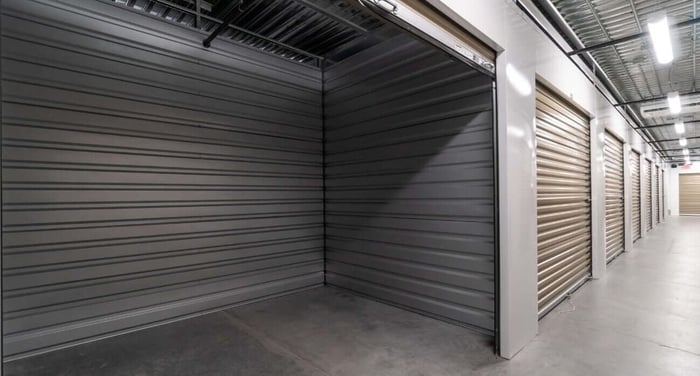 In Scottsdale, Arizona, STORAGExperts shares smart packing strategies that help protect fragile items and keep your move stress-free from start to finish.
In Scottsdale, Arizona, STORAGExperts shares smart packing strategies that help protect fragile items and keep your move stress-free from start to finish.
 In Scottsdale, Arizona, STORAGExperts shares smart packing strategies that help protect fragile items and keep your move stress-free from start to finish.
In Scottsdale, Arizona, STORAGExperts shares smart packing strategies that help protect fragile items and keep your move stress-free from start to finish.It's tempting to cram as much as possible into each box, especially when trying to minimize the number of moves or trips to the truck. However, overpacking makes boxes difficult to lift and increases the risk of tearing or crushing.
Weight Guidelines:
- Keep boxes under 50 pounds if possible
- Use smaller boxes for heavier items
- If a box feels too heavy, redistribute the content
Remember, it's better to have more boxes that are easy to load, stack, and unload than fewer that risk breaking under pressure.
Load the Truck Strategically
When it's time to load the moving truck, arrange items so that heavy furniture, appliances, and large containers go in first.
Smart Loading Order:
- Heavy items and furniture
- Large boxes and specialty containers
- Light or fragile boxes on top
- "Open First" essentials near the door
This setup protects your belongings during transport and makes it easier to access essential items immediately upon arrival at your new house.
Keep Essentials Separate
Pack a separate "essentials box" for every person in your family. This might include:
- Toothbrush and basic bathroom products
- One or two outfits
- Chargers for your laptop and phone
- A few kitchen supplies for meals
- Medications and documents
Having this small box ready saves you from having to hunt through dozens of boxes at the end of a long moving day.
Consider a Climate-Controlled Storage Unit
Sometimes, there's too much to move at once, or maybe your new place isn't quite ready. In these cases, a climate-controlled storage unit can be a game-changer.
These units help preserve your goods by regulating temperature and humidity—perfect for:
- Books, electronics, and laptops
- Wooden furniture
- Clothes, especially seasonal ones
- Pictures and TVs
- Blankets, pillows, and linens
Whether you need short-term or long-term storage, STORAGExperts offers secure and affordable services designed to meet your specific needs.
Final Checklist Before You Move
Before you walk out the door, do one last check of your household.
- Go room-by-room and double-check closets, drawers, and cabinets
- Make sure all boxes are labeled and taped shut
- Disassemble large furniture to save space in the truck
- Confirm your movers or rental truck service is ready
- Back up your laptop and store valuables securely
This step ensures nothing is forgotten and gives you peace of mind during the transition.
Trust the Experts for a Smooth Move
Whether you're a young woman moving out on your own, a family relocating across state lines, or someone just shifting between locations in the same city, moving doesn't have to be overwhelming. With this guide, a strong checklist, the right materials, and support from professionals like STORAGExperts, you'll be equipped to handle every item, box, and step in the journey.
From organization and smart packing to choosing the best storage options, we're here to help make your next move efficient, affordable, and stress-free.
Let us be your guide as you move your world—one box at a time.
Frequently Asked Questions
1. How far in advance should I start packing before my move?
It's best to start packing at least four to six weeks before your move. Begin with items you use the least (such as seasonal clothes, decor, and books), and save everyday essentials for last.
2. What should I avoid packing in moving boxes?
Avoid packing hazardous materials, such as cleaning chemicals, flammable items, perishable foods, and valuables like jewelry or important documents. Keep these with you or dispose of them safely.
3. How do I prevent damage to my furniture during a move?
Disassemble furniture where possible and wrap each piece in moving blankets or bubble wrap. Use padding between stacked items in the truck to reduce shifting.
4. Are plastic containers better than cardboard boxes?
Plastic containers are durable and reusable, making them great for long-term storage or heavy items. However, cardboard boxes are more flexible in terms of sizing and stacking and are easier to label and recycle.
5. Should I pack my clothes in boxes, bags, or wardrobe boxes?
For quick access and wrinkle-free packing, wardrobe boxes are ideal for storing and hanging clothes. Folded clothes can be placed in suitcases or medium-sized boxes. Avoid trash bags—they tear easily and offer no structure.
6. How do I pack electronics safely?
Use the original boxes if available. Otherwise, wrap each device in bubble wrap, secure it with packing tape, and cushion it with towels or foam in a sturdy box. Label the box as "Fragile" and "This Side Up."
7. Can I use household items, such as towels or sheets, instead of packing paper?
Absolutely. Towels, linens, and blankets make excellent padding and help reduce waste. Use them to wrap fragile goods or fill gaps in boxes for added protection.
8. What is the best way to pack kitchen items, such as plates and glassware?
Wrap each item in packing paper or bubble wrap and stack vertically in small boxes with cushioning on the bottom and between layers. Use dividers or specialty boxes for glasses.
9. Is it worth hiring professional packers for my move?
If you're short on time, have fragile or valuable items, or are coordinating a significant household move, professional packers can save you time and offer peace of mind with efficient and secure packing.
10. What should I do with boxes and packing materials after the move?
Break down and recycle cardboard boxes, or donate them to others moving soon. Store bubble wrap and plastic bins for future use, or check with local services for eco-friendly disposal options.

